
B-25 Flights
Step into the pages of aviation history and embark on an exhilarating journey aboard EAA’s legendary B-25 Berlin Express. This iconic aircraft stands as a testament to wartime bravery and innovation, carrying with it the legacy of daring missions and heroic endeavors.
Join us in paying homage to our veterans and embracing the essence of flight by securing your seat on the B-25 Berlin Express. Your ticket not only guarantees a memorable ride but also extends support to the Experimental Aircraft Association, a nonprofit organization committed to preserving aviation heritage and inspiring future generations of aviators and enthusiasts.
Our passionate volunteers await to immerse you in the captivating tales and historical significance of the B-25, ensuring an educational and unforgettable experience for your entire family. Don't miss out on this opportunity to capture timeless memories – admission to view the aircraft is complimentary, so grab your camera and seize the moment!
B-25 Flight Experience Pricing
- Non-Members $495
- EAA Members $475
*1 year EAA membership included with non-member ticket purchases
Ford Tri-Motor Experience Pricing
- Non-Members $495
- EAA Members $475
*1 year EAA membership included with non-member ticket purchases
Ford Tri-Motor Experience Pricing
- Non-Members $495
- EAA Members $475
*1 year EAA membership included with non-member ticket purchases
Upcoming B-25 Berlin Express Flights
| May 16 - May 19, 2024 | Peru, IL United States | Book Your Flight |
| May 24 - May 26, 2024 | Cincinnati, OH United States | Book Your Flight |
| June 14 - June 16, 2024 | Olathe, KS United States | Book Your Flight |
| June 21 - June 23, 2024 | Rockford, IL United States | Book Your Flight |
| June 27 - June 30, 2024 | Madison, WI United States | Book Your Flight |
| July 22 - July 28, 2024 | Oshkosh, WI United States | Book Your Flight |
More Stops Coming Soon!
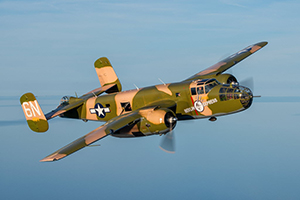
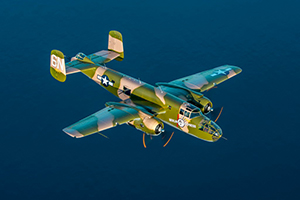
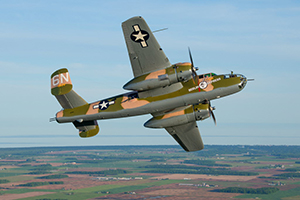
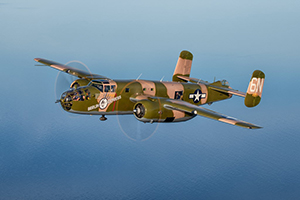
Frequently Asked Questions
How do I schedule a flight?
Book online or call 1-800-359-6217. Walk-ups for the current tour stop are always welcome by calling the Tour Coordinator at 920-379-4244. The Tour Coordinator can let you know if seats are still available at the current tour stop.
What happens during a flight experience?
Here is the schedule for a typical flight experience:
Arrival: Arrive one hour prior to your scheduled flight time to get acquainted with the aircraft and crew. You will be asked to fill out a form, and if you have not yet paid, the fee will be requested at this time as well.
Preflight: Shortly before boarding the airplane, we will discuss aircraft safety with you and the other riders. Seating assignments and flight procedures will be discussed at this time. You will then be taken aboard the aircraft. All passengers must be seated and wear a seatbelt for engine start, taxi, and takeoff.
During Flight: Once the aircraft is in the air, you will be allowed to move about the aircraft freely. Take this time to visit the various compartments of the aircraft. Explore as much as you like and feel free to take pictures and video.
Landing: All passengers must be seated and wear a seatbelt for landing, taxi, and engine shutdown.
How long does the flight experience last?
Each flight experience lasts approximately one hour, including briefing, debriefing, and about 18 minutes of actual flight time.
What should I wear or bring?
Wear clothing appropriate to local weather conditions. The aircraft can be drafty at times, so you may consider bringing a light jacket or sweatshirt for the flight. Foam ear plugs are provided if you would like them (the flight can be quite noisy.) Cameras and camcorders are allowed (and encouraged), but please try and keep them as small as possible as space is restricted inside the airplane. Other forms of baggage are generally discouraged.
Do I need to be a pilot or a military veteran?
No. Anyone can take a B-25 flight experience. You need not be a pilot or military veteran.
Do I need to be an EAA member?
No, it is not required to be an EAA member to ride in the airplane.
I'm a pilot. Will I be allowed to handle the controls of the airplane?
It is not possible for you to sit at the controls or interfere with the pilots during the flight. This is an FAA regulation.
How many seats are available on each flight?
There are 8 seats available on each flight available on a first-come, first-served basis. A minimum of 5 people are required per flight. If fewer than 5 people are booked, we will try to reschedule the flight that day or another day during the tour. If rescheduling is not possible these flights may be cancelled and a cancellation charge will not be assessed.
Is the airplane accessible to people of limited mobility?
All passengers are required to board, exit, and take their seats in the aircraft unassisted. Steps are required to enter the airplane.
What happens if the weather is bad?
If mechanical or weather problems occur at the time of your scheduled flight, alternatives will be discussed with you whether to reschedule the flight for a later time, date, or location. Weather and/or mechanical problems may delay or cancel a scheduled flight. Every effort will be made to reschedule these flights.
Is a waiver of liability required?
Yes, a signed waiver must be signed by all passengers.
A parent or legal guardian is required to sign a waiver for each minor under the age of 18.
What if I have other questions?
If you have further questions, please call 1-800-359-6217 or e-mail B25@EAA.org.
History of the B-25
The North American B-25 Mitchell, a versatile medium bomber, played a pivotal role in World War II across all branches of the United States armed forces. This powerful twin-engine and twin-tailed aircraft was named in honor of General Billy Mitchell, a prominent advocate for air power. The B-25 also served Allied nations through lend-lease agreements, proving its effectiveness in various combat theaters.
Following the United States Army Air Corps' call for a medium bomber in March 1939, North American delivered the NA-62 prototype, later designated as the B-25, meeting stringent requirements for payload capacity, range, and speed. The aircraft's outstanding performance led the Air Corps to call for immediate full-scale production without the need for further testing.
The B-25 gained widespread recognition during the daring Doolittle Raid on Tokyo in April 1942, a mission led by renowned aviator General James H. Doolittle. Despite launching earlier and at a greater distance than planned due to enemy detection, the raid achieved its objectives, significantly boosting national morale and demonstrating the aircraft's capabilities.
Production of the B-25 was a significant feat, with North American's facilities in Kansas City, Kansas and Inglewood, California leading the effort. Remarkably, North American became the sole company producing bombers, fighters, and trainers concurrently during the war, resulting in the production of a substantial number of aircraft.
Throughout the war, B-25s were extensively employed in the Pacific theater, where their versatility and effectiveness in ground attack roles were particularly notable. Units like the famed 345th Bomb Group, known as the "Air Apaches," used B-25s with great success in various campaigns.
The B-25 underwent continuous development, resulting in variants such as the heavily armed G and H models, as well as naval versions designated as the PBJ. By the end of the war, nearly 10,000 B-25s had been built, solidifying its place as one of the most iconic aircraft of the era.
Following the war, the B-25 continued to serve in various capacities within the peacetime Air Force, including roles as personal transports and training aircraft, until its retirement from military service in May 1960. In civilian hands, the B-25 found new life as an executive transport and played a crucial role as a fire bomber, contributing to its enduring legacy beyond wartime service.
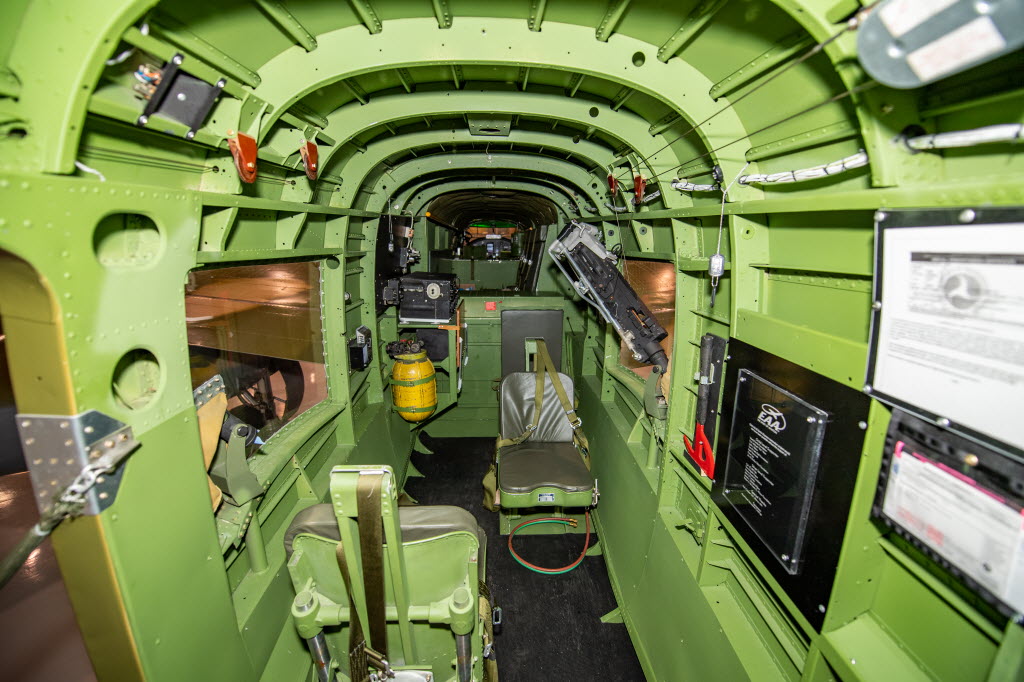
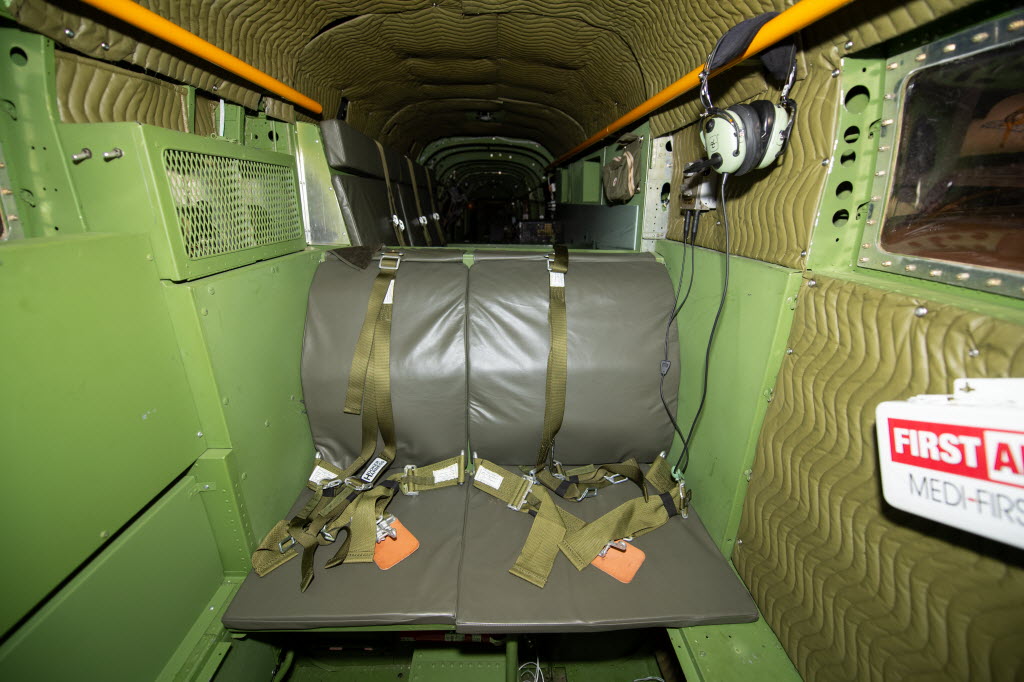
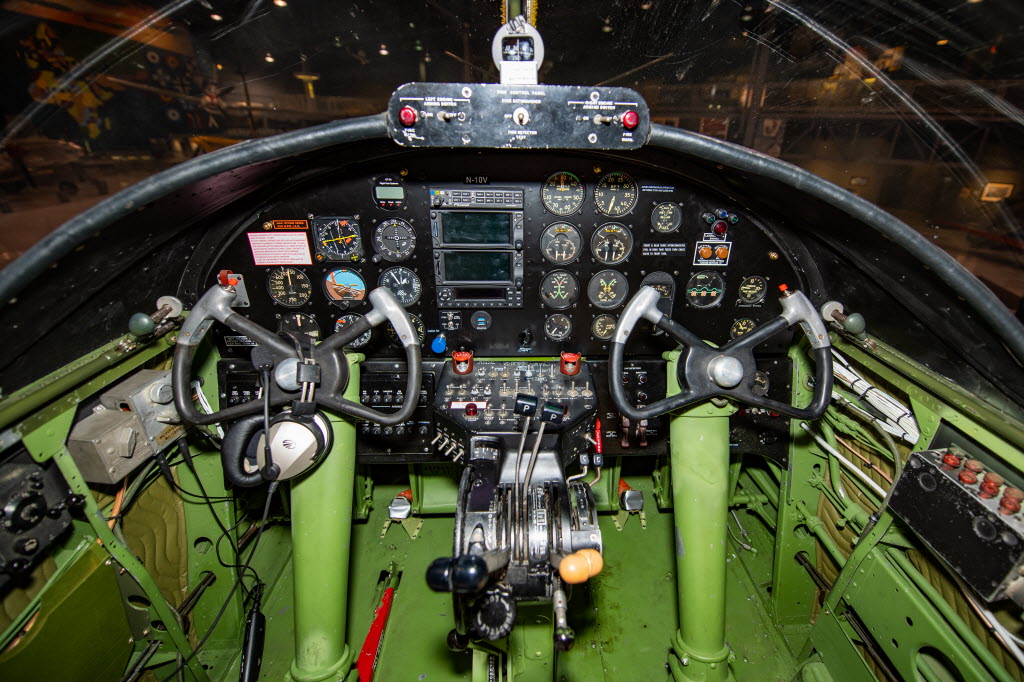
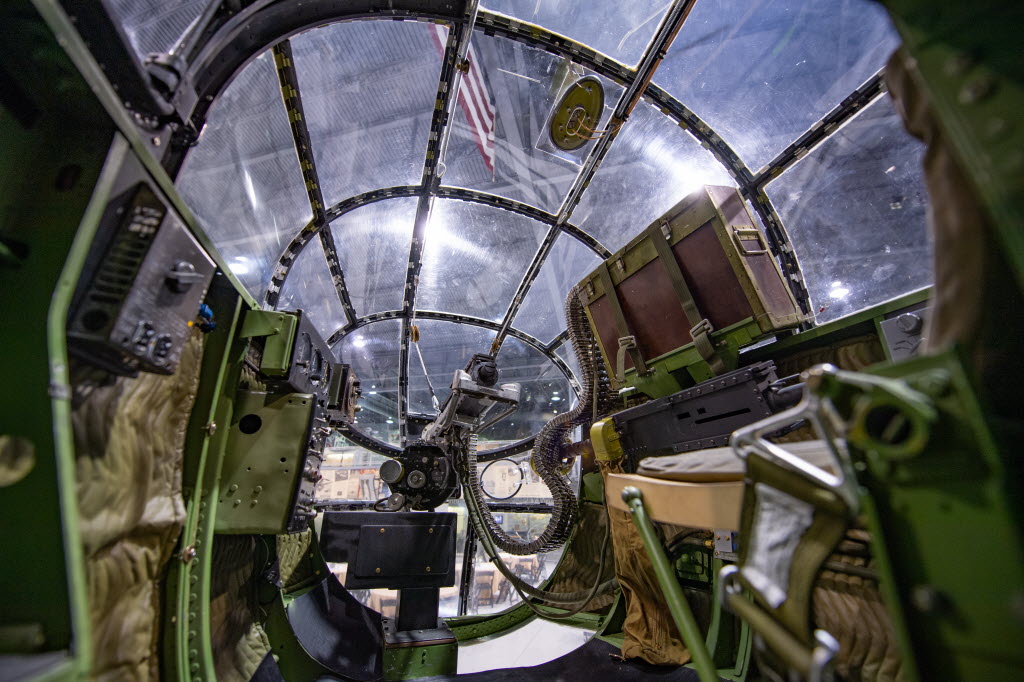
Berlin Express History
Our B-25, construction No. 98-21433, was assigned serial No. 43-4432 when it was first accepted by what was then the U.S. Army Air Forces in late December 1943. As an H model, when it left the factory, it would have had a blunt, solid nose fitted with two fixed .50-caliber machine guns and a massive 75 mm cannon, essentially the same as the main gun used on several models of the venerable Sherman tank. Ours was the 327th H model off the assembly line of the thousand or so that were built. The airplane served out the war in a low-key role as an administrative aircraft, stationed at bases in Washington, Colorado, and California, and was at one point modified for use as a trainer.
The airplane was sold as surplus shortly after the war and changed hands several times over the next 20-plus years. It was heavily modified for use as an executive transport and spent a few years in service of Woolworth’s heiress Barbara Hutton and her husband, Dominican diplomat, race car driver, polo player, and maybe-assassin Porfirio Rubirosa. Then, in 1968, after a stint with Long Island Airways, Filmways, Inc. and the legendary Tallmantz Aviation got involved and decided that N10V ought to be in pictures. As it was for many movie stars of the day, step one was a nose job. The airplane was given a J-model greenhouse nose section, historically inaccurate but giving it the traditional look that, to some people, makes a B-25 a B-25. Tallmantz assembled N10V with 17 other flyable B-25s to begin production on Catch-22, director Mike Nichols’ adaptation of Joseph Heller’s bitter satire about life in wartime.
On the Silver Screen
Alongside star Alan Arkin and just about every other working actor in Hollywood at the time, our B-25 played two roles in the film: a VIP transport for Orson Welles’ Brig. Gen. Dreedle, and a bomber named Berlin Express, complete with nose art that features Hitler himself in the crosshairs. The movie takes place in Italy, but the scenes with the B-25s were shot at a purpose-built air base set in Mexico, the remains of which still survive today on an area known unofficially as “Catch-22 Beach.” N10V and the other B-25s logged more than 1,500 hours of flying time during the three-month shoot that generated about 14 and a half hours of film. If that ratio — flying more than 100 hours for every hour of film shot — seems remarkable, then consider the fact that, of that 14 and a half hours, just 17 minutes ended up being used in the final cut of the picture. Such are the vagaries of Hollywood economics.
The film, released in 1970 against the backdrop of the Vietnam War, is considered a classic by some and an acquired taste by others. Regardless, those 17 minutes of B-25 flying, in particular a mass short-interval takeoff sequence, are not to be missed. Once filming had wrapped, Tallmantz sold 13 of the airplanes at an auction at Orange County airport. An orthodontist, warbird collector, and accomplished air race pilot from Merced, California, Dr. William Sherman Cooper, bought N10V in May 1971. Cooper was killed in a crash while practicing aerobatics in his Pitts Special a year later, and the B-25 was donated to the EAA Aviation Foundation.
EAA staff and volunteers fully restored the airplane starting in 1975, removing the airplane’s movie livery and repainting it as the City of Burlington, including nose art that honored our home state of Wisconsin. The airplane flew in these colors for several years, even hopping rides for visiting VIPs like Sen. Barry Goldwater, until it was damaged after a gear failure on landing. At that point, it underwent a cosmetic restoration and was moved into the EAA Aviation Museum’s Eagle Hangar, where it remained for the next few decades.
Now, fully restored in its movie star markings, Berlin Express is ready for its next mission: joining our B-17, Aluminum Overcast, in honoring WWII veterans as well as helping inspire a new generation of aviation enthusiasts.

